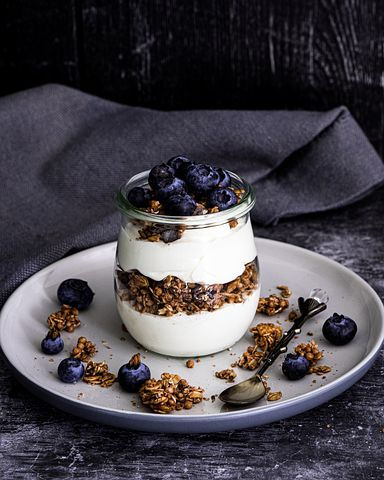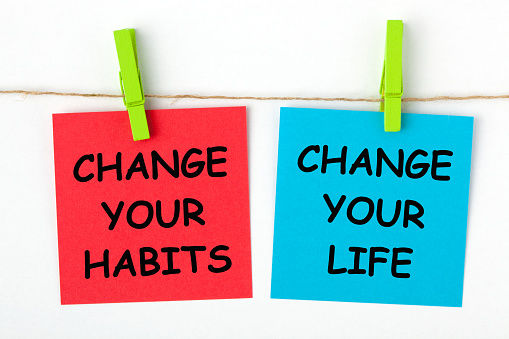
The food we eat can affect our health, our mood and our risk for certain diseases. To aim for eating healthier we may need to change some of our not so good habits and reinforce our good habits. Below are 2 lists that can be added to or modified to help you on your journey to healthy eating.
Good habits or choices that we can make:

· Eat a variety of vegetables, especially dark green, red and orange vegetables (aim for 3+ servings per day).
· Eat a variety of fruits (aim for 2+ servings per day).
· Eat whole-grain, high fiber bread and cereals (aim for 3-6 servings per day). Reduce or eliminate refined or processed carbohydrates.
· Drink fat-free or low-fat milk and eat low-fat dairy products.

· Choose from a variety of low-fat sources of protein. These can include eggs, beans, poultry without skin, seafood, lean meat, unsalted nuts, seeds and soy products. If you eat meat it is recommended to eat white meat at least 4 times more than red meat. It is also best to reduce highly processed meat (I.E. lunch meat, bacon, sausage).
· Eat low-mercury, non-fried fish weekly (aim for 2-3 servings per week).
· Include fermented foods in your diet. Some examples of these include Yogurt / Greek Yogurt, Kombucha, Miso Soup, Kimchi and Sauerkraut.
· Reduce intake of saturated fats and trans-fats (such as partially hydrogenated oil) as much as possible.

· Use vegetable oils (like canola or olive oil) instead of solid fats.
· Reduce the daily intake of salt or sodium. If you are over 50, have hypertension, diabetes or chronic kidney disease it is recommended to reduce to less than 1,500 mg per day.
· Restrict or eliminate foods that contain refined white flour, solid fats, trans-fats, added sugars and are high in sodium.
· Restrict or eliminate sodas and other sugar added drinks that are high in calories and contain few or no nutrients.
· If you consume alcohol, do so in moderation.
Some bad eating habits that can be contributing to weight gain and unhealthy patterns:

· Eating too fast
· Skipping meals (or maybe just breakfast)
· Always cleaning your plate
· Eating while standing up

· Always eating dessert
· Eating when you are not hungry
· Having a sugary drink or a cocktail after work
· Stopping by your favorite fast-food joint on the way home
Some cues or triggers to be aware of that might be leading to bad habits:

· Going through your favorite drive through on the way to work
· Sitting at home watching TV
· Opening up the cabinet and seeing your favorite snack food
· Before or after a stressful meeting or situation
· Coming home after work with no idea what’s for dinner
· Sitting in the break room at work beside the vending machine

· Seeing the box of donuts or plate of cookies on the break room table at work
· Feeling bored, or tired or thinking that you need a pick-me-up
· Having someone offer you a dish that they make “just for you!”
· Walking pasty the candy dish on the counter
· Going grocery shopping without a list or when we are hungry
Feel free to print off, change, personalize or add to these lists and put them where you can see them frequently. Another thought might be that you choose a few that speak to you and write yourself a little reminder on a post-it that is on the refrigerator or cabinet door to begin your awareness process to make changing an easier activity for you.
References: Coleman, E. (2011) Diet, Exercise and Fitness. Nutrition Dimension Inc.
Kline, D. and Coleman, E. (2008) Practical Nutrition for Fitness Professionals. Nutrition Dimension Inc.
Next time:

Stay tuned for my next blog in 2 weeks for Healthy Eating Part 3 where we discuss potential simple changes that could start you on your healthy eating lifestyle!
Related Post Links: Healthy Eating Part 1:
Healthy Eating Part 3:
Author: Jen Hassaj | 1-25-23



Комментарии